Hany Farid
Univeristy of California, Berkeley, Berkeley, CA, USA
Has an AI model been trained on your images?
Jan 11, 2025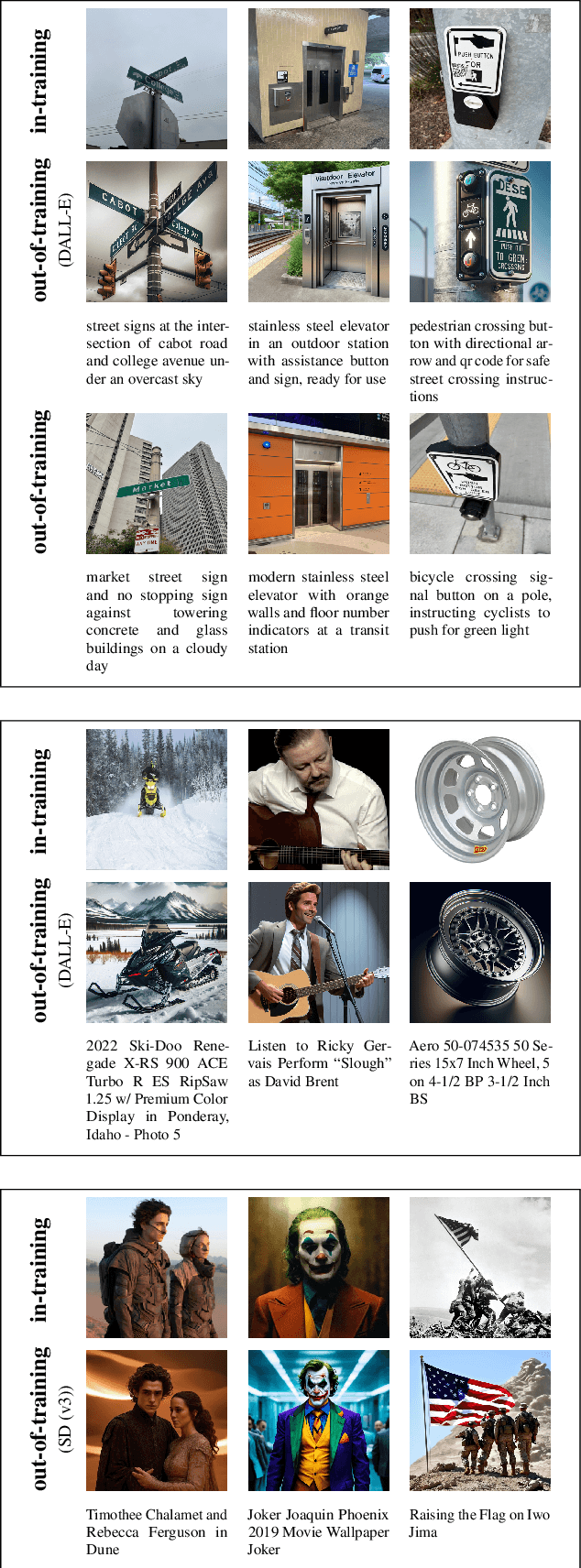
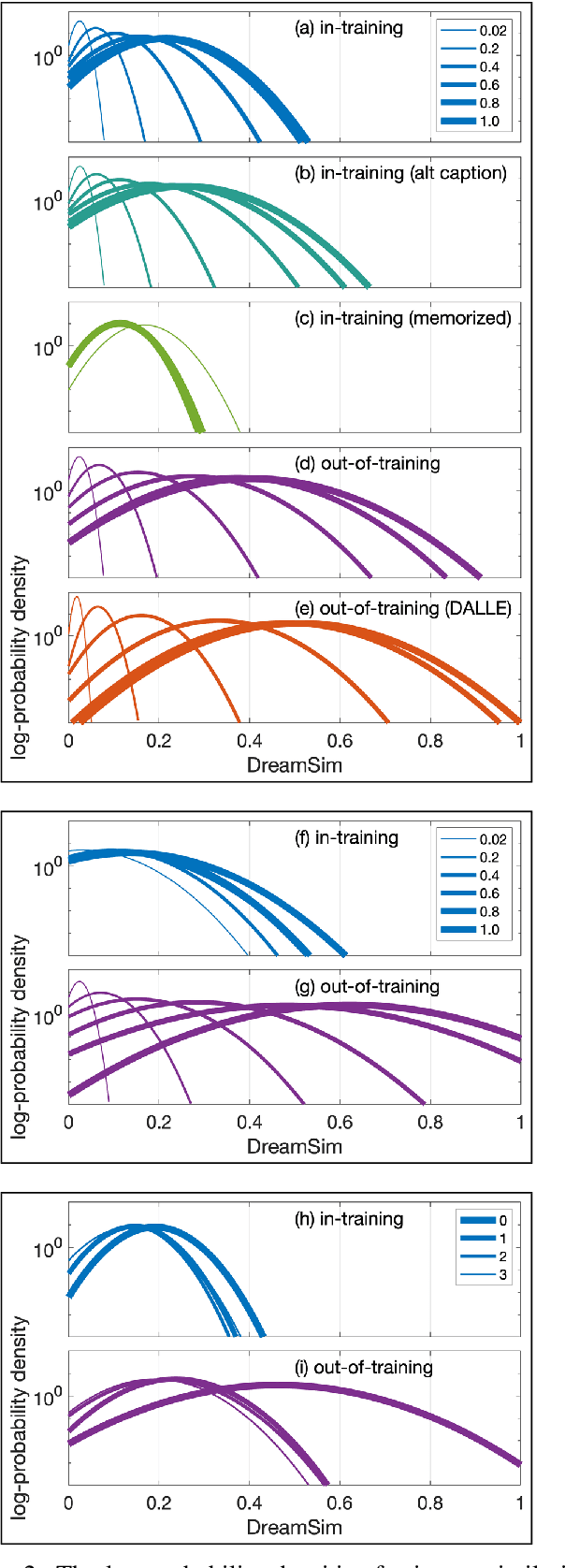
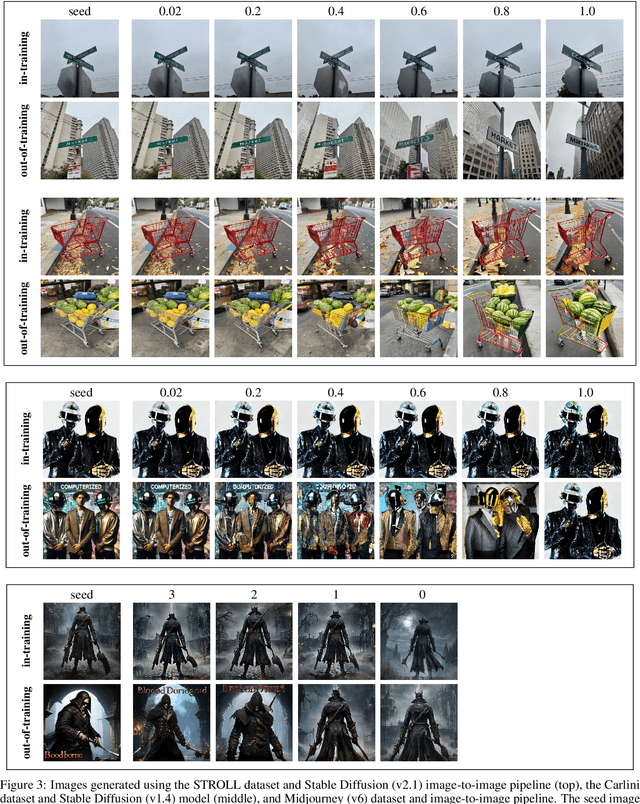
Abstract:From a simple text prompt, generative-AI image models can create stunningly realistic and creative images bounded, it seems, by only our imagination. These models have achieved this remarkable feat thanks, in part, to the ingestion of billions of images collected from nearly every corner of the internet. Many creators have understandably expressed concern over how their intellectual property has been ingested without their permission or a mechanism to opt out of training. As a result, questions of fair use and copyright infringement have quickly emerged. We describe a method that allows us to determine if a model was trained on a specific image or set of images. This method is computationally efficient and assumes no explicit knowledge of the model architecture or weights (so-called black-box membership inference). We anticipate that this method will be crucial for auditing existing models and, looking ahead, ensuring the fairer development and deployment of generative AI models.
Human Action CLIPS: Detecting AI-generated Human Motion
Nov 30, 2024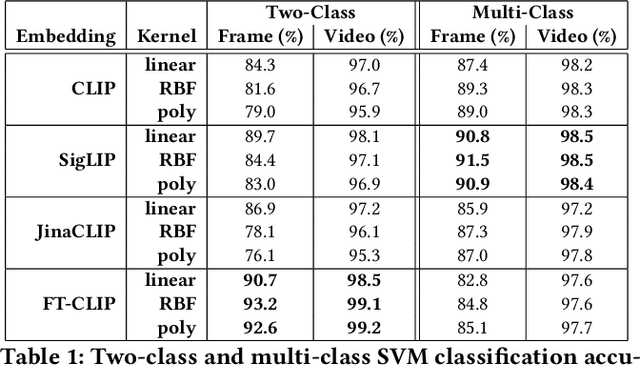
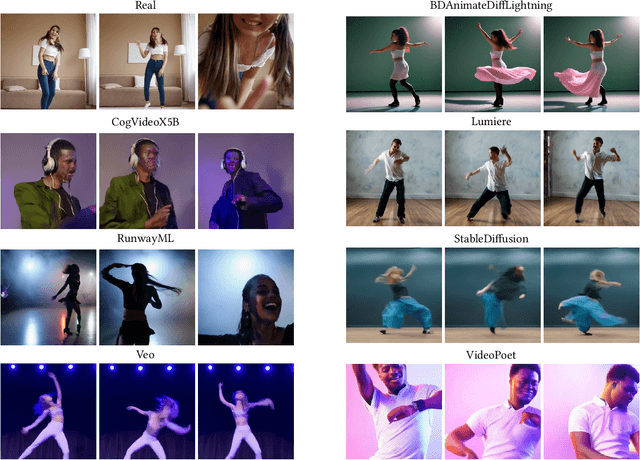
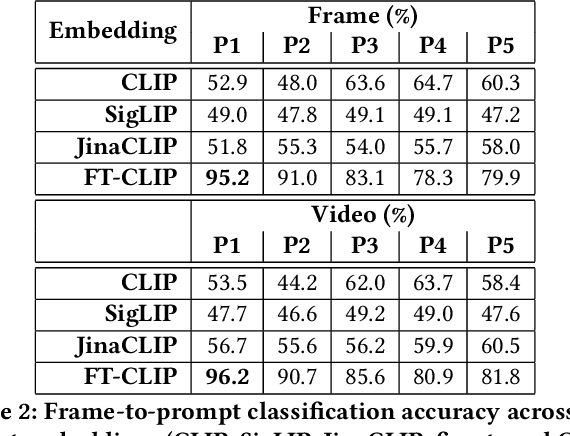
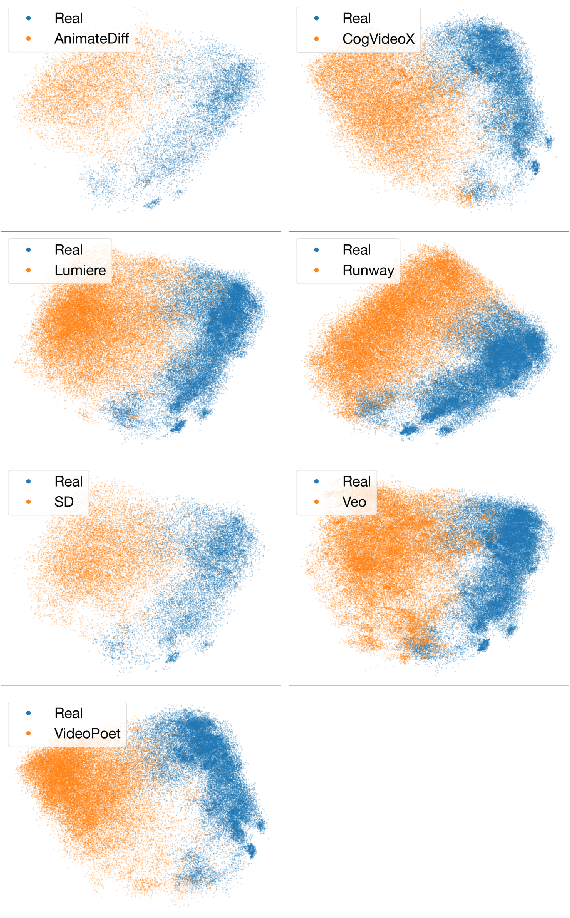
Abstract:Full-blown AI-generated video generation continues its journey through the uncanny valley to produce content that is perceptually indistinguishable from reality. Intermixed with many exciting and creative applications are malicious applications that harm individuals, organizations, and democracies. We describe an effective and robust technique for distinguishing real from AI-generated human motion. This technique leverages a multi-modal semantic embedding, making it robust to the types of laundering that typically confound more low- to mid-level approaches. This method is evaluated against a custom-built dataset of video clips with human actions generated by seven text-to-video AI models and matching real footage.
People are poorly equipped to detect AI-powered voice clones
Oct 03, 2024Abstract:As generative AI continues its ballistic trajectory, everything from text to audio, image, and video generation continues to improve in mimicking human-generated content. Through a series of perceptual studies, we report on the realism of AI-generated voices in terms of identity matching and naturalness. We find human participants cannot reliably identify short recordings (less than 20 seconds) of AI-generated voices. Specifically, participants mistook the identity of an AI-voice for its real counterpart 80% of the time, and correctly identified a voice as AI-generated only 60% of the time. In all cases, performance is independent of the demographics of the speaker or listener.
DeepSpeak Dataset v1.0
Aug 09, 2024


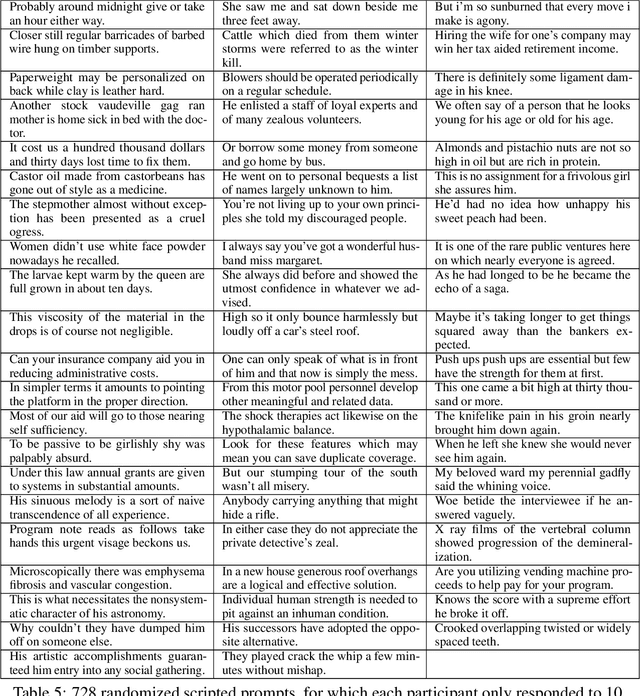
Abstract:We describe a large-scale dataset--{\em DeepSpeak}--of real and deepfake footage of people talking and gesturing in front of their webcams. The real videos in this first version of the dataset consist of $9$ hours of footage from $220$ diverse individuals. Constituting more than 25 hours of footage, the fake videos consist of a range of different state-of-the-art face-swap and lip-sync deepfakes with natural and AI-generated voices. We expect to release future versions of this dataset with different and updated deepfake technologies. This dataset is made freely available for research and non-commercial uses; requests for commercial use will be considered.
Misinformation is not about Bad Facts: An Analysis of the Production and Consumption of Fringe Content
Mar 13, 2024Abstract:What if misinformation is not an information problem at all? Our findings suggest that online fringe ideologies spread through the use of content that is consensus-based and "factually correct". We found that Australian news publishers with both moderate and far-right political leanings contain comparable levels of information completeness and quality; and furthermore, that far-right Twitter users often share from moderate sources. However, a stark difference emerges when we consider two additional factors: 1) the narrow topic selection of articles by far-right users, suggesting that they cherrypick only news articles that engage with specific topics of their concern, and 2) the difference between moderate and far-right publishers when we examine the writing style of their articles. Furthermore, we can even identify users prone to sharing misinformation based on their communication style. These findings have important implications for countering online misinformation, as they highlight the powerful role that users' personal bias towards specific topics, and publishers' writing styles, have in amplifying fringe ideologies online.
Finding AI-Generated Faces in the Wild
Nov 20, 2023



Abstract:AI-based image generation has continued to rapidly improve, producing increasingly more realistic images with fewer obvious visual flaws. AI-generated images are being used to create fake online profiles which in turn are being used for spam, fraud, and disinformation campaigns. As the general problem of detecting any type of manipulated or synthesized content is receiving increasing attention, here we focus on a more narrow task of distinguishing a real face from an AI-generated face. This is particularly applicable when tackling inauthentic online accounts with a fake user profile photo. We show that by focusing on only faces, a more resilient and general-purpose artifact can be detected that allows for the detection of AI-generated faces from a variety of GAN- and diffusion-based synthesis engines, and across image resolutions (as low as 128 x 128 pixels) and qualities.
Nepotistically Trained Generative-AI Models Collapse
Nov 20, 2023

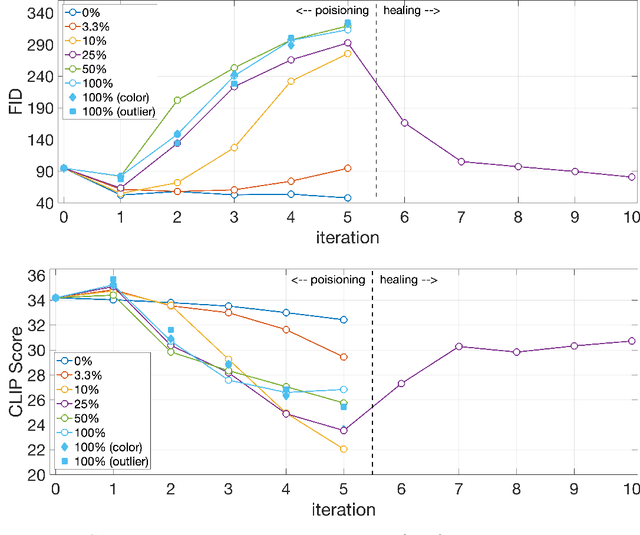
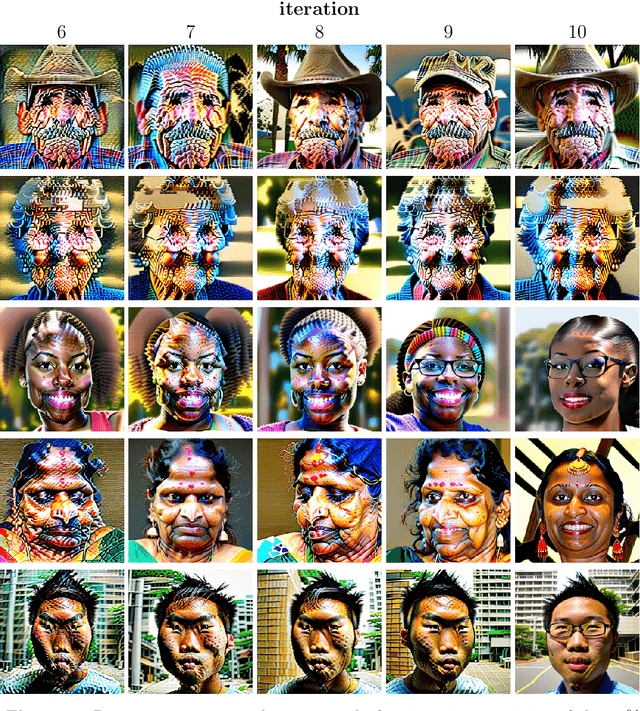
Abstract:Trained on massive amounts of human-generated content, AI (artificial intelligence) image synthesis is capable of reproducing semantically coherent images that match the visual appearance of its training data. We show that when retrained on even small amounts of their own creation, these generative-AI models produce highly distorted images. We also show that this distortion extends beyond the text prompts used in retraining, and that once poisoned, the models struggle to fully heal even after retraining on only real images.
An Evaluation of Forensic Facial Recognition
Nov 10, 2023Abstract:Recent advances in machine learning and computer vision have led to reported facial recognition accuracies surpassing human performance. We question if these systems will translate to real-world forensic scenarios in which a potentially low-resolution, low-quality, partially-occluded image is compared against a standard facial database. We describe the construction of a large-scale synthetic facial dataset along with a controlled facial forensic lineup, the combination of which allows for a controlled evaluation of facial recognition under a range of real-world conditions. Using this synthetic dataset, and a popular dataset of real faces, we evaluate the accuracy of two popular neural-based recognition systems. We find that previously reported face recognition accuracies of more than 95% drop to as low as 65% in this more challenging forensic scenario.
Single and Multi-Speaker Cloned Voice Detection: From Perceptual to Learned Features
Jul 15, 2023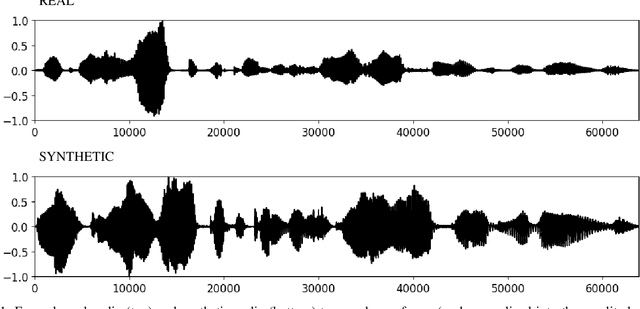


Abstract:Synthetic-voice cloning technologies have seen significant advances in recent years, giving rise to a range of potential harms. From small- and large-scale financial fraud to disinformation campaigns, the need for reliable methods to differentiate real and synthesized voices is imperative. We describe three techniques for differentiating a real from a cloned voice designed to impersonate a specific person. These three approaches differ in their feature extraction stage with low-dimensional perceptual features offering high interpretability but lower accuracy, to generic spectral features, and end-to-end learned features offering less interpretability but higher accuracy. We show the efficacy of these approaches when trained on a single speaker's voice and when trained on multiple voices. The learned features consistently yield an equal error rate between $0\%$ and $4\%$, and are reasonably robust to adversarial laundering.
Art and the science of generative AI: A deeper dive
Jun 07, 2023Abstract:A new class of tools, colloquially called generative AI, can produce high-quality artistic media for visual arts, concept art, music, fiction, literature, video, and animation. The generative capabilities of these tools are likely to fundamentally alter the creative processes by which creators formulate ideas and put them into production. As creativity is reimagined, so too may be many sectors of society. Understanding the impact of generative AI - and making policy decisions around it - requires new interdisciplinary scientific inquiry into culture, economics, law, algorithms, and the interaction of technology and creativity. We argue that generative AI is not the harbinger of art's demise, but rather is a new medium with its own distinct affordances. In this vein, we consider the impacts of this new medium on creators across four themes: aesthetics and culture, legal questions of ownership and credit, the future of creative work, and impacts on the contemporary media ecosystem. Across these themes, we highlight key research questions and directions to inform policy and beneficial uses of the technology.
 Add to Chrome
Add to Chrome Add to Firefox
Add to Firefox Add to Edge
Add to Edge